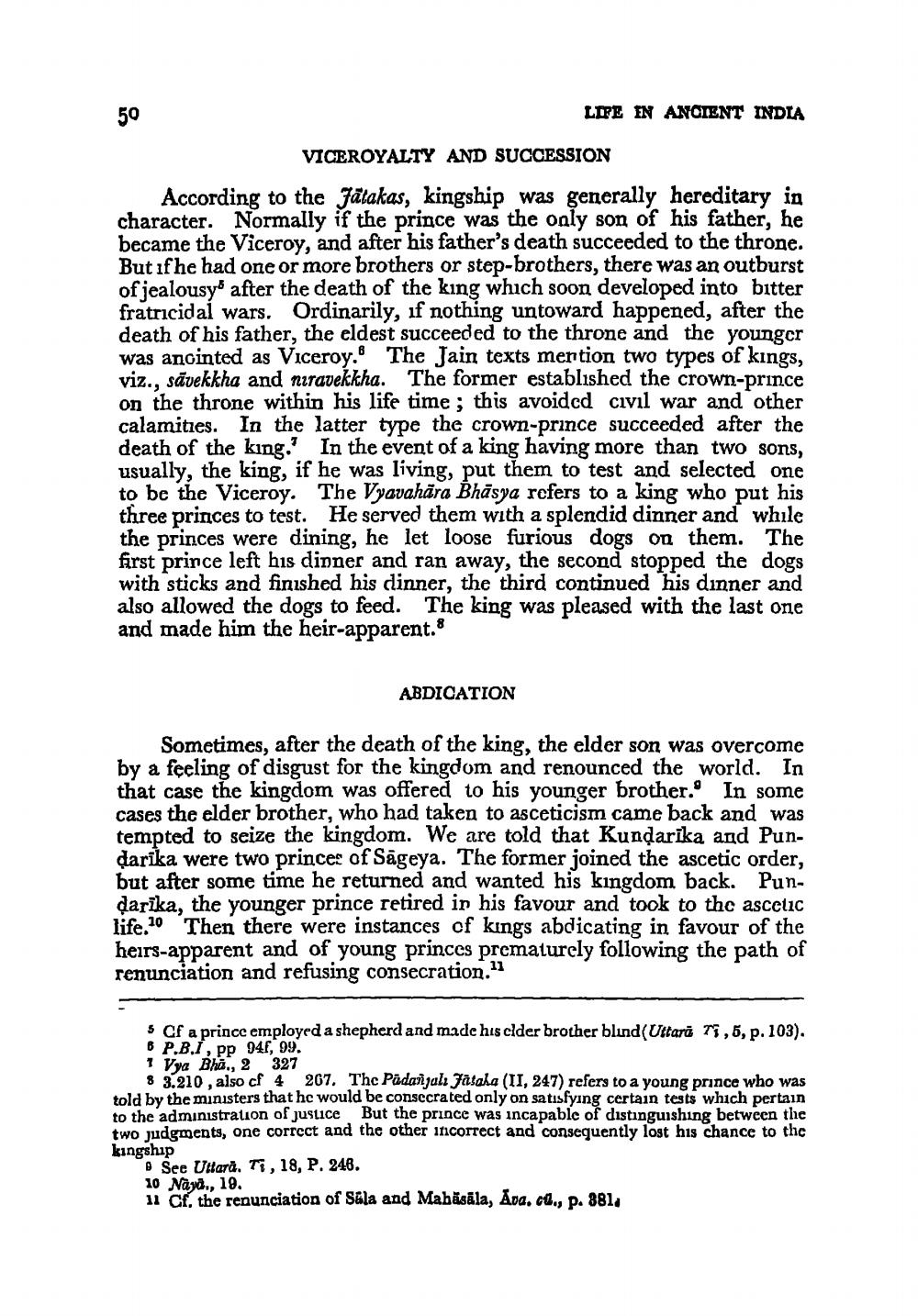________________
50
LIFE IN ANCIENT INDIA
VICEROYALTY AND SUCCESSION
According to the Jātakas, kingship was generally hereditary in character. Normally if the prince was the only son of his father, he became the Viceroy, and after his father's death succeeded to the throne. But if he had one or more brothers or step-brothers, there was an outburst of jealousy after the death of the king which soon developed into bitter fratricidal wars, Ordinarily, if nothing untoward happened, after the death of his father, the eldest succeeded to the throne and the younger was anointed as Viceroy. The Jain texts mention two types of kings, viz., sāvekkha and niravekkha. The former established the crown-prince on the throne within his life time; this avoided civil war and other calamities. In the latter type the crown-prince succeeded after the death of the king. In the event of a king having more than two sons, usually, the king, if he was living, put them to test and selected one to be the Viceroy. The Vyavahāra Bhasya refers to a king who put his three princes to test. He served them with a splendid dinner and while the princes were dining, he let loose furious dogs on them. The first prince left his dinner and ran away, the second stopped the dogs with sticks and finished his dinner, the third continued his dinner and also allowed the dogs to feed. The king was pleased with the last one and made him the heir-apparent.8
ABDICATION
Sometimes, after the death of the king, the elder son was overcome by a feeling of disgust for the kingdom and renounced the world. In that case the kingdom was offered to his younger brother. In some cases the elder brother, who had taken to asceticism came back and was tempted to seize the kingdom. We are told that Kundarika and Pundarika were two princes of Sageya. The former joined the ascetic order, but after some time he returned and wanted his kingdom back. Pundarika, the younger prince retired in his favour and took to the ascetic life.10 Then there were instances of kings abdicating in favour of the heirs-apparent and of young princes prematurely following the path of renunciation and refusing consecration."
5 Cf a prince employed a shepherd and made his elder brother blind(Uttará 71,5, p. 103). 8 P.B.I, pp 94€, 99. 1 Vya Bhi., 2 327
8 3.210. also cf 4 267. The Padanjali Fatala (II, 247) refers to a young prince who was told by the ministers that he would be consccrated only on satisfying certain tests which pertain to the administration of justice But the prince was incapable of distinguishing between the two judgments, one correct and the other iticorrect and consequently lost his chance to the kingship
See Uttara. Ti , 18, P. 248. 10 Naya., 10. u Cr, the renunciation of Sala and Mahāsāla, Ada, cl., p. 881,




